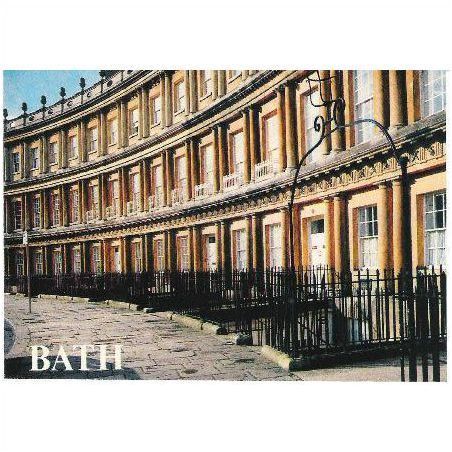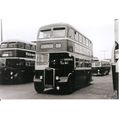Bath, Somerset - The Circus - John Hinde postcard
- Condition : Used
- Dispatch : 2 Days
- Brand : None
- ID# : 101840218
- Quantity : 1 item
- Views : 331
- Location : United Kingdom

- Seller : justthebook (+1703)
- Barcode : None
- Start : Sat 13 Apr 2013 19:31:40 (EDT)
- Close : Run Until Sold
- Remain : Run Until Sold
Checks/Cheques
 for 1 item(s) edit
for 1 item(s) edit
Shipping Calculator
More Listings from This Seller view all
Seller's Description
- Postcard
- Picture / Image: The Circus, Bath, NE Somerset
- Publisher: John Hinde (PAV27609)
- Postally used: no
- Stamp: n/a
- Postmark(s): n/a
- Sent to: n/a
- Notes / condition:
Please ask if you need any other information and I will do the best I can to answer.
------------------------------------------------
Postage & Packing:
UK (incl. IOM, CI & BFPO): 99p
Europe: £1.60
Rest of world (inc. USA etc): £2.75
No additional charges for more than one postcard. You can buy as many postcards from me as you like and you will just pay the fee above once. (If buying postcards with other things such as books, please contact or wait for invoice before paying).
Payment Methods:
UK - PayPal, Cheque (from UK bank) or postal order
Outside UK: PayPal ONLY (unless otherwise stated) please. NO non-UK currency checks or money orders (sorry).
NOTE: All postcards are sent in brand new stiffened envelopes which I have bought for the task. These are specially made to protect postcards and you may be able to re-use them. In addition there are other costs to sending so the above charge is not just for the stamp!
I will give a full refund if you are not fully satisfied with the postcard.
----------------------------------------------
Text from the free encyclopedia WIKIPEDIA may appear below to give a little background information (internal links may not work) :
*************
The Circus is an example of Georgian architecture in the city of Bath, Somerset, England, begun in 1754 and completed in 1768. The name comes from the Latin 'circus', which means a ring, oval or circle. It has been designated as a Grade I listed building.[1]
Divided into three segments of equal length, the Circus is a circular space surrounded by large townhouses. Each of the curved segments faces one of the three entrances, ensuring that whichever way a visitor enters there is a classical facade straight ahead.
The Circus, originally called King's Circus, was designed by the architect John Wood, the Elder, although he never lived to see his plans put into effect as he died less than three months after the first stone was laid. It was left to his son, John Wood, the Younger to complete the scheme to his father's design. The initial leases for the south west segment were granted in 1755-67, those for the south east segment in 1762-6, and those for the north segment in 1764–6.
The Circus was part of John Wood the Elder's grand vision to recreate a classical Palladian architectural landscape for the city. Other projects included nearby Queen Square and the Forum (which was never built). The Circus is the culmination of Wood's career, and is considered his masterpiece.[2]
Wood's inspiration was the Roman Colosseum, but whereas the Colosseum was designed to be seen from the outside, the Circus faces inwardly. Three classical Orders, (Greek Doric, Roman/Composite and Corinthian) are used, one above the other, in the elegant curved facades. The frieze of the Doric entablature is decorated with alternating triglyphs and 525 pictorial emblems, including serpents, nautical symbols, devices representing the arts and sciences, and masonic symbols. The parapet is adorned with stone acorn finials.
When viewed from the air, the Circus, along with Queens Square and the adjoining Gay Street, form a key shape, which is a masonic symbol similar to those that adorn many of Wood's buildings.[3]
The central area was paved with stone setts, covering a reservoir in the centre that supplied water to the houses. In 1800 the Circus residents enclosed the central part of the open space as a garden. Now, the central area is grassed over and is home to a group of old plane trees.
Between 1758 and 1774 number 17 The Circus was home to Thomas Gainsborough and used as his portrait studio.[4]
During the Bath Blitz of 25/26 April 1942, one of the retailitory raids on England Baedeker Blitz following the RAF's raid on Lübeck, a bomb fell into the Circus, demolishing several of the houses. These have since been reconstructed in the original style.
Architectural historian Dan Cruickshank selected the Circus as one of his five choices for the 2006 BBC television documentary series Britain's Best Buildings.[5]
type=printed postcards
theme=topographical: british
sub-theme=england
county/ country=somerset
number of items=single
period=1945 - present
postage condition=unposted
Listing Information
| Listing Type | Gallery Listing |
| Listing ID# | 101840218 |
| Start Time | Sat 13 Apr 2013 19:31:40 (EDT) |
| Close Time | Run Until Sold |
| Starting Bid | Fixed Price (no bidding) |
| Item Condition | Used |
| Bids | 0 |
| Views | 331 |
| Dispatch Time | 2 Days |
| Quantity | 1 |
| Location | United Kingdom |
| Auto Extend | No |





















